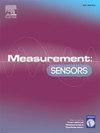Wearable sensor-based fall detection for elderly care using ensemble machine learning techniques
Q4 Engineering
引用次数: 0
Abstract
Older people face serious issues with unintentional collisions that result in healthcare admissions and fatalities. Since numerous accidents happen quickly, it might be difficult to identify crashes in context. Enhancing the quality of services for older people requires the development of a computerized surveillance network that can anticipate accidents before occur, offer protection throughout the incident, and send out remote warnings following an accident. This research suggested a wearing surveillance system that seeks to detect accidents at the onset and lineage, triggering an alarm to reduce damages caused by accidents and sending out an external alert when the human body hits the hard surface. Meanwhile, the research's offsite evaluation of a combined structure utilizing the Random Forest technique (RF), Supporting Vectors Machines (SVM), and available information were used to illustrate this idea. The suggested method employed RF to reliably retrieve features from speedometer and inertial facts, while SVM provides an estimator and classification-capable method. Each module in the unique category-based composite structure is recognized at a certain level. The suggested strategy outperformed modern fall identification techniques when tested using the labeled KFall database, achieving average precision of 95 percent, 96 percent, as well as 98 percent for Non-Falls, Pre-Falls, as well as detectable fall incidents, correspondingly. The whole assessment proved the algorithmic learning structure's efficacy. Older people's standard of existence will increase, and accidents will be avoided because of such smart tracking devices.
基于集成机器学习技术的可穿戴传感器的老年人跌倒检测
老年人面临着严重的意外碰撞问题,导致医疗入院和死亡。由于许多事故发生得很快,因此可能很难在上下文中识别事故。要提高为长者提供的服务质素,就必须发展电脑监控网络,在意外发生前作出预测,在意外发生时提供全程保护,并在意外发生后发出远程警告。该研究提出了一种穿戴式监视系统,该系统可以在事故发生和发生过程中发现事故,并发出警报以减少事故造成的损害,当人体接触到坚硬的表面时,会发出外部警报。同时,该研究利用随机森林技术(RF)、支持向量机(SVM)和现有信息对组合结构进行了场外评估,以说明这一想法。该方法利用射频可靠地从速度计和惯性事实中检索特征,而支持向量机提供了一种估计和分类能力的方法。唯一的基于类别的复合结构中的每个模块都在某个级别上得到识别。当使用标记的KFall数据库进行测试时,建议的策略优于现代跌倒识别技术,相应的,在非跌倒、预跌倒和可检测的跌倒事件中,平均精度分别达到95%、96%和98%。整个评估证明了算法学习结构的有效性。老年人的生活水平将会提高,事故也会因为这样的智能跟踪设备而避免。
本文章由计算机程序翻译,如有差异,请以英文原文为准。
求助全文
约1分钟内获得全文
求助全文
来源期刊

Measurement Sensors
Engineering-Industrial and Manufacturing Engineering
CiteScore
3.10
自引率
0.00%
发文量
184
审稿时长
56 days
 求助内容:
求助内容: 应助结果提醒方式:
应助结果提醒方式:


